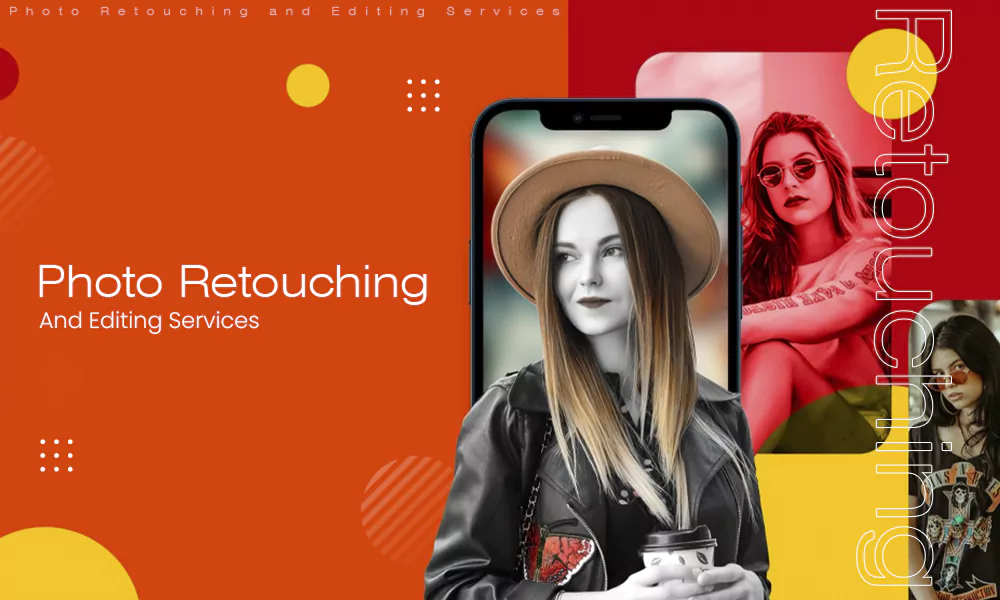
Photoshop is one of the most revolutionary inventions in both digital design and visual communication, education and advertising, and photography in the modern world. It has become so ubiquitous that “to Photoshop” has entered the lexicon as a verb, a privilege shared only among technologies that fundamentally change how society makes and interprets images.
More than any other single application, Photoshop has played a defining role in the evolution of visual culture around the world, including in advertising, film, music, publishing, and social media. Still, the story of its origins is much less grand than its current prominence would suggest.
In order to understand the legacy Photoshop so uniquely carries, we must also consider when it was invented and why. Astonishingly, Photoshop began not as a corporate initiative at Adobe, but as a passion project by a curious Ph.D. candidate and his visionary brother, years before digital design was even on the horizon.
Also Read: Best Adobe Photoshop Alternatives
The Birth of Photoshop: A Quick Timeline
1987: Concept Begins
Thomas Knoll was a Ph.D. candidate at the University of Michigan and was majoring in computer vision when he started writing a program on his Macintosh Plus that could display grayscale images. While many might think that he was trying to revolutionize digital imaging, that’s not the truth, as he was doing it because of a personal problem. Thomas came up with Jennifer in Paradise, the first ever photoshopped image, in 1987.
1988: Collaboration With John Knoll
During this time, Thomas’s brother, John Knoll, was a visual effects supervisor at Industrial Light & Magic (ILM), who was quick to see the potential that was in the program created by his brother. John was already quite successful, as he had worked on various film projects.
He instantly approached Thomas, as he was aware of the limitations of available digital tools, and together they came up with ImagePro.
1989: Adobe Acquires Photoshop
The Knoll brothers approached various software companies, pitching their vision, but achieved no success. However, Adobe came across their work and saw commercial potential. The distribution license was purchased by Adobe Systems in 1989 and renamed to Photoshop.
Because of this, the Knoll brothers were able to get all the resources they needed to further develop a program that would reach a global audience.
1990: Official Release of Photoshop 1.0
Finally, in 1990, Adobe Photoshop 1.0 launched exclusively for Macintosh computers. This started a new era in digital creativity. Now, photographers, designers, and filmmakers have capabilities that were nearly impossible a few years ago.
This was the time when Adobe Photoshop became a global sensation, from just being a side project, and is now considered the world’s most powerful graphics and photo editing software.
Who Invented Photoshop?
The original concept and the technical mind behind ImagePro was Thomas; however, his brother has played an equally important role. In a Reddit post, which was created by Thomas nearly 11 years ago, he stated that he is the “co-founder” of Adobe Photoshop, along with his brother John.
Thomas focused on manipulating grayscale pixels, a limitation imposed by the hardware of the time. However, yes, he is the person who wrote an efficient, flexible code that laid the foundation for the world’s first mainstream digital image editing application.
On the other hand, John, who was already working for ILM, knew about the challenges that were faced in digital compositing and image manipulation during film production. He was the one who realized that his brother’s code could solve some of the biggest problems in this particular industry.
John had a vision in mind and how this one code could resolve difficulties that multimillion-dollar film studios were facing without adequate tools. These two brothers collaborated and made software that is now being used for all kinds of things.
Also Read: How to Make Basic Editing on Adobe Photoshop For Beginners
Why Was Photoshop Invented?
Photoshop was never meant to be a commercial product or a tool for creative professionals. It was very straightforward; the early computers could not simply process and manipulate digital images in meaningful ways.
In the 1980s, computers were only capable of displaying grayscale images, and the available editing tools were either extremely limited or nonexistent. On the other hand, creative professionals like photographers, filmmakers, and printers were in search of something that could allow them to have more digital control.
Thomas came up with a perfect solution, a software that could enhance and manipulate images using computing power. While today, adjusting contrast, improving clarity, correcting flaws, and modifying visual elements don’t look like a huge deal, it was groundbreaking at that time.
Photoshop’s Early Purpose and Features
When Photoshop 1.0 was released in 1990, it provided a revolutionary set of tools, changing the role of digital imaging. It included cropping and selection tools, paintbrush and pen options, gradients, and rare tonal control (levels and curves).
The early use of crude mask-like approaches and layer behaviors enabled users to separate some aspect of the image for editing or adjustments to a part of the image. Where traditional professionals coming from a darkroom could never work, Photoshop brought speed, accuracy, and flexibility to this work, allowing the former chemical process to be recreated in a digital environment.
And where traditional professionals had formerly taken hours for setup and meticulous processes, Photoshop reduced this workflow time to minutes and hours, while also providing new creative possibilities that were previously impossible. This provides an understanding of the early developments in workflow and image-finishing systems for current design and photography.
How Photoshop Evolved Over the Years
So, it’s been 35 years since Adobe Photoshop was introduced, that’s over 3 decades. It has undergone some major changes, and we’ll examine how it has evolved.
Photoshop 3.0 (1994): Introduction of Layers
In 1994, Layers was introduced, which revolutionized digital editing and compositing. This was one of those innovations that changed how designers and photographers approached their work. It allowed them to create complex multi-element compositions with ease.
Photoshop 7.0 (2002): Healing Brush and File Browser
With the introduction of the healing brush and file browser, retouching became faster and more natural, offering seamless blending of textures and details. The integrated file browser simplified workflow management.
Photoshop CS–CS6 (2003–2012): The Creative Suite Era
During this time, some major features were added. This includes:
- Smart objects
- Camera Raw integration
- Advanced 3D tools
- Improved text and vector features
These features changed Adobe Photoshop completely; it became more than an image editor, it became a multidisciplinary creative hub.
Photoshop CC (2013–Present): The Cloud and Artificial Intelligence Era
In the present, the audience was met with even better additions. This includes:
- Continuous updates
- Cloud integration
- Access across devices
- AI-powered features like Generative Fill, Neural Filters, and enhanced object removal
Now Adobe Photoshop works seamlessly with other Adobe products like Illustrator, Lightroom, Premiere Pro, and After Effects, offering a unified creative ecosystem.
The Impact of Photoshop on Modern Design & Photography
Photoshop’s impact extends well beyond photo editing, redefining the notion of digital creativity altogether. It established an entirely new way of visual communication, a new means of being creative, digital art, graphic design, advanced retouching, and visual effects for large productions, etc. This raised the bar on what was achievable by creators on computers.
Industries that were focused on traditional analog approaches to correction methods swiftly began the transition to digital approaches. Photoshop changed the game to be so precise that it gave the ability for creatives to manipulate images with a much greater control and dynamic speed than was ever achievable in an analog world.
Eventually, it became essential for all media and communication. Today, magazines, advertising agencies, social media, and even iPhone photographers depend on Photoshop as a tool to enhance visuals, tell stories, and meet audiences’ growing expectations.
Photoshop in Pop Culture and Society
Photoshop is no longer just an editing tool. The term “Photoshopped” is now being used globally, referring to a digitally altered image. It has become part of everyday language, reflecting how deeply the software has influenced public perception of visuals.
It has greatly impacted marketing, advertising, film, television, and the polished aesthetics seen across social media platforms. However, a debate has also been started about authenticity, body image, and ethical editing practices.
These tools are being used in many ways that include unethical use. Digital content can easily be altered, and truth can be changed with some minimal editing, which further creates chaos. While it was revolutionary, it has also raised various concerns, as you can’t trust everything that you see on the internet.
The Legacy and Future of Photoshop
Many might think that Adobe Photoshop has finally reached perfection, but it’s for sure that in the upcoming years, more features will be introduced that will further elevate the user experience and make things easier.
The company is already working on artificial intelligence, automation, and cross-device workflows to ensure that the platform remains at the forefront of creative technology. Furthermore, collaboration has also become seamless due to its cloud-based tools.
It’s safe to say that Adobe Photoshop is the best in its field, and in the near future, it will reach even greater heights and set an example for upcoming pieces of software.
FAQ’s
Q1. What was Photoshop created for?
Ans: Photoshop was created by Thomas and John Knoll so that people could digitally edit their images and enhance the overall appeal of their photographs.
Q2. What was the first movie to use Photoshop?
Ans: The Abyss by Industrial Light & Magic was the first film that used Photoshop. John Knoll was the Visual Effects Supervisor there and used it to enhance the graphics.
Q3. What is the main purpose of Photoshop?
Ans: Photoshop can be used in many ways, but its main purpose is to manipulate and edit raster images.
Q4. When did photoshopping become a thing?
Ans: Photoshopping became a thing back in 1987 when Thomas and John Knoll, two brothers, invented ImagePro, which was further acquired by Adobe.
Conclusion
Adobe Photoshop changed many industries and made things easier for millions of people around the globe. It is one of those inventions that changed the world for good. But as mentioned earlier, it is being used for unethical activities, and some of those offenses are punishable.
At the end of the day, users are responsible for how they are using the platform. Thomas and John Knoll saw a vision and made it a reality. Today, Photoshop is being used everywhere, from product images to big-budget films.
Even in the future, it will keep on climbing higher and introduce features that would blow our minds. So, let’s see what the future holds for the user and the company.









